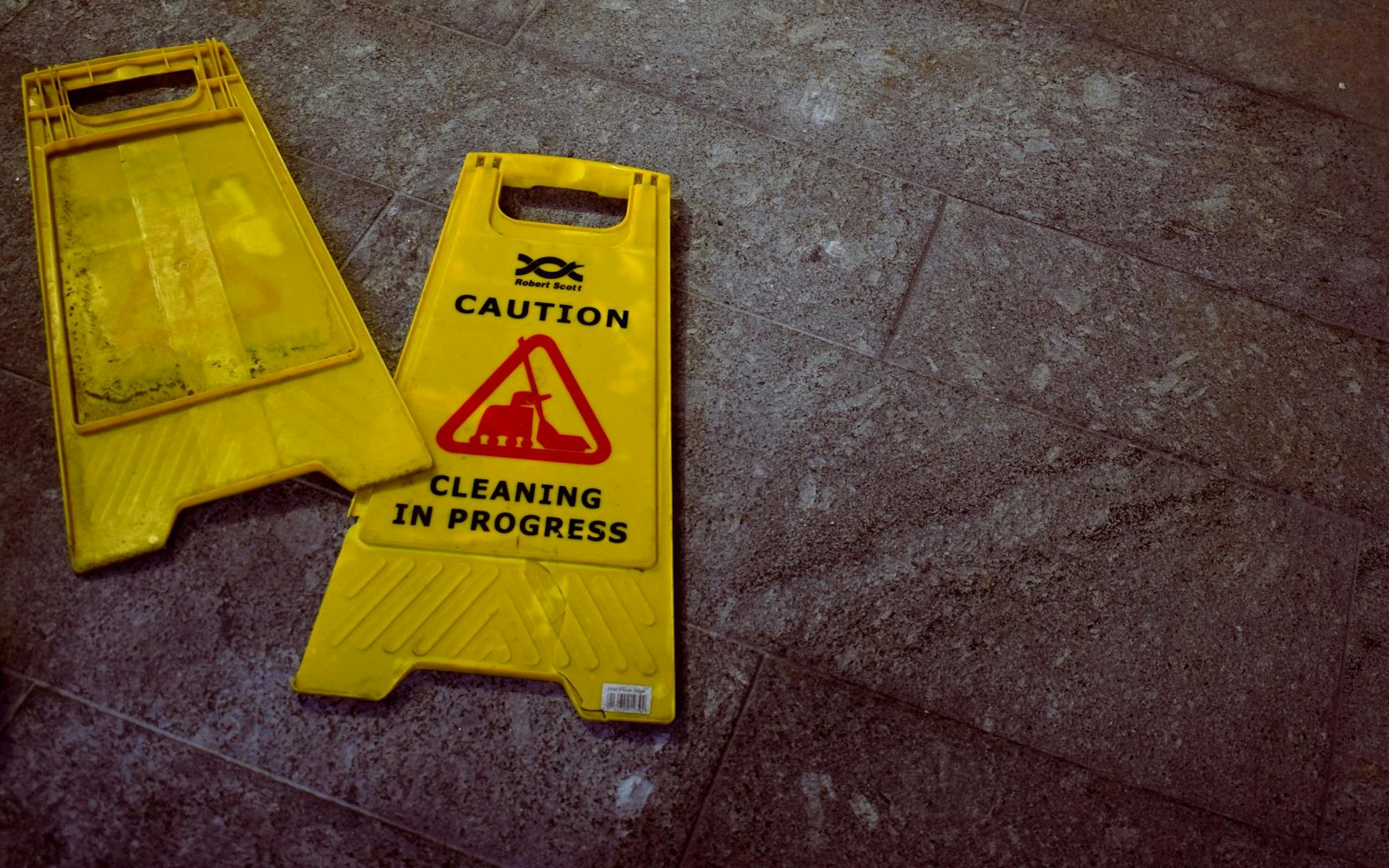Master SOP Management: A Complete Guide for HR & Operations


Standard Operating Procedures (SOPs) form the foundation of operational excellence in any organization. Effective SOP management ensures that documented step-by-step instructions standardize routine operations, promoting consistency, quality, and compliance across business processes.
The SOP management landscape has evolved from paper binders to digital platforms accessible anywhere. Digital systems provide immediate access to current procedures, resolve version control issues, and incorporate multimedia elements that simplify complex processes.
Digital SOP management is necessary for organizations aiming to standardize operations, meet regulatory requirements, and remain competitive where precision affects profits.
The Business Value of Effective SOP Management
A solid SOP management system pays for itself many times over. When you adopt comprehensive SOP practices, you build a foundation for excellence that directly boosts your bottom line.
Good SOP management systems ensure everyone follows the same playbook, no matter their location or department. This consistency cuts down on errors and rework, saving time and resources while maintaining quality.
They also reduce operational risk. When your team follows documented, proven procedures, you'll see fewer accidents, compliance issues, and quality problems that could damage your reputation or cost you money.
Training becomes much more efficient too. New hires who can access clear SOPs become productive faster. This quick onboarding saves substantial labor costs, especially if you have high turnover.
Perhaps most valuable is how SOPs preserve knowledge. Documenting processes retains important know-how even when experienced employees leave, ensuring your operations continue smoothly despite workforce changes.
Core Components of a Modern SOP Management System
If you've ever hunted for an outdated procedure manual when you needed it most, you know how frustrating poor SOP management can be. For organizations with non-desk workers, effective SOP management systems aren't optional—they're essential for safety, compliance, and efficiency.
Key to this is successful non-desk employee communication that ensures SOPs are accessible and understandable to all employees, regardless of their location. Here's what makes up a modern SOP management system built for non-desk employees.
Accessibility Solutions in SOP Management
Accessibility matters most for non-desk workers who need immediate procedure access while working in the field, on the factory floor, or at a construction site. Modern SOP management systems need:
- Mobile-first design: Your field workers need SOPs they can access on their mobile phones. This lets them check procedures on-site without returning to an office. Mobile accessibility ensures workers follow correct procedures even when away from a desk.
- Offline capabilities: Many non-desk employees work in connectivity dead zones—manufacturing facilities with metal structures, remote sites, or basement maintenance areas. Good SOP management systems provide offline access that syncs when connection returns.
- Multi-language support: In diverse workforces, SOPs in multiple languages ensure everyone understands procedures regardless of their primary language.
- Visual-heavy formats: Non-desk workers often understand information better through visuals. Adding diagrams, images, and videos makes SOPs easier to follow in real-world situations.
Document Control Features in SOP Management
Storing SOPs centrally matters, but how you manage these documents is just as important:
- Centralized digital repository: All SOPs should live in one digital hub where employees can quickly find current versions. This central repository eliminates confusion from outdated manuals or scattered files.
- Version control and revision history: Your system should track who changed what, when, and how. This creates accountability and ensures only current versions are used.
- Permission-based access: Not everyone needs access to every SOP. A good system lets you control who can view, edit, or approve different procedures based on their role.
- Automated review cycles: SOPs need regular updates to stay relevant. Your system should automate this by sending notifications when documents need review.
Distribution and Communication in SOP Management
Even perfect SOPs fail if workers don't know they exist or when they've changed. Modern SOP management systems excel at distribution through:
- Push notifications: When SOPs update, your system should automatically alert affected employees, especially for safety or compliance changes.
- Quick-reference options: Features like QR codes in work areas or keyword search help workers find information quickly without scrolling through long documents.
- Digital acknowledgment: Tracking which employees have reviewed updated SOPs is important for compliance and accountability, especially in regulated industries.
Modern SOP management systems excel at distribution through these efficient communication strategies.
The SOP Lifecycle Management Framework
Think of SOPs as living documents that need constant care to stay effective. A complete SOP management lifecycle framework helps you maintain procedures that evolve with your business, keeping them relevant and valuable for daily operations.
Before creating any SOP, audit your existing procedures and workflows to understand what you have and what needs improvement. This groundwork helps you build SOPs that solve real problems rather than creating paperwork for its own sake.
Just as important: involve your employees in creating SOPs. Their hands-on experience reveals practical aspects you might miss otherwise.
Creation Phase in SOP Management
When creating SOPs, focus on your most important processes first to get maximum value from your initial work. During this phase:
- Ask non-desk workers to help create procedures based on their daily experience.
- Use simple language everyone can understand regardless of education.
- Add diagrams, flowcharts, and images to explain complex steps.
- Choose formats that fit how workers will access and use the information.
Include a review step with stakeholders from different departments to check accuracy, completeness, and usability before implementation.
Implementation Phase in SOP Management
Effective implementation goes beyond just publishing documents. During this phase:
- Develop training to ensure everyone knows how to access and follow SOPs. Hands-on training sessions can reinforce understanding.
- Consider non-desk workers' specific needs. Mobile-friendly formats, QR codes, and printed guides improve usability.
- Create channels for employees to suggest improvements. A feedback loop ensures SOPs stay relevant as work conditions evolve.
- Set up ways to measure how well new procedures work. Track compliance, efficiency, and error reduction to gauge effectiveness.
- Test major changes with small groups before full rollout. Piloting minimizes disruption and refines procedures before company-wide adoption.
Implementation is where theory meets practice, so be ready to adjust based on real-world feedback
Maintenance Phase in SOP Management
Maintenance is where many SOP programs fall short as procedures become outdated. To prevent this:
- Schedule regular reviews to keep SOPs current and effective. Set update intervals based on process complexity and regulatory requirements.
- Assign specific owners for each SOP to ensure clear responsibility. Designated individuals oversee updates and employee adherence.
- Track versions to ensure everyone uses current procedures. A centralized system prevents outdated copies from causing errors.
- Monitor how often SOPs are used and how well they work. Usage data highlights gaps and opportunities for improvement.
Viewing SOPs through this lifecycle lens transforms them from static documents into dynamic tools that continuously support your goals and adapt to changing business needs.
Industry-Specific SOP Management Challenges and Solutions
Different industries face unique challenges when managing SOPs for non-desk workers. Understanding these specific issues helps create effective SOP management systems that drive compliance and operational success.
SOP Management in Manufacturing and Construction
In manufacturing, SOPs focus on equipment operation, quality control, and production workflows. Main challenges include:
- Maintaining consistency across multiple shifts and production lines.
- Updating SOPs as equipment and processes change.
- Connecting SOPs with quality management systems.
Manufacturing companies solve these problems with visual work instructions that include photos and videos, plus integration with machinery sensors.
While manufacturing deals with repetitive processes, construction faces different challenges due to its project-based nature:
- Work environments that constantly change.
- Teams that vary from project to project.
- Regulations that differ across locations.
Construction companies address these issues with mobile SOP management. Many now use QR codes on equipment that workers scan to access operating and safety procedures. This approach significantly improves safety compliance and reduces equipment accidents.
SOP Management in Healthcare and Pharmaceuticals
Unlike construction, healthcare SOPs prioritize patient safety, regulations, and consistent care. Their challenges include:
- Strict regulatory requirements (HIPAA, JCA).
- Procedures where mistakes can be life-threatening.
- Need for immediate SOP access during emergencies.
Healthcare organizations respond with HIPAA-compliant SOP management systems that integrate with Electronic Health Records and provide emergency procedure guides. Many use digital knowledge bases with point-of-care support tools and care guidelines accessible on mobile devices.
Pharmaceutical manufacturing faces even stricter regulations. Their SOP management systems include robust version control, electronic signatures for Good Manufacturing Practices (GMP), and detailed audit trails. For them, a good SOP system isn't just helpful—it's required for business.
SOP Management in Retail and Hospitality
Moving from healthcare to hospitality, we find different priorities focused on customer experience and operational efficiency. Challenges include:
- High turnover requires frequent training.
- Staff speaking different languages with varying reading levels.
- Balancing standardization with personalized service.
The hospitality industry addresses these challenges through multi-language support, visual cleaning checklists, and guest request tracking. Many hotels use mobile SOP management with images and videos for training housekeeping staff, food safety, and guest service.
Large hotel chains have implemented digital systems that standardize operations while allowing property-specific adjustments. These systems often include game elements to increase staff engagement, improve compliance, and provide real-time feedback to management, ensuring higher service quality across locations.
Technology Solutions for Modern SOP Management
Managing SOPs effectively requires the right tools, especially for non-desk workers. Implementing modern technology solutions for SOP management can significantly enhance how procedures are communicated and accessed by non-desk workers. Today's solutions offer features designed specifically for employees who aren't at desks all day.
Mobile-First SOP Management Solutions for Distributed Workforces
For non-desk workers, accessible information is indispensable. Leading platforms offer offline capabilities through an offline-first approach. This design ensures workers can access procedures even without the internet.
Offline features include:
- Local storage using device databases for complete access.
- Updates that sync automatically when connection returns.
- Systems to handle changes made while offline.
- Efficient syncing to minimize data usage.
Implementing SMS solutions for employee communication can provide easy and direct access to SOPs, even for workers without smartphones or internet connectivity. SMS-based SOP delivery keeps workers informed by sending updates directly to their phones. This method works well for mobile teams, ensuring they receive timely reminders or procedure changes, even on basic mobile devices.
Dedicated SOP Management Software Platforms
The heart of modern SOP management is a central digital hub where procedures live and breathe. Dedicated SOP management platforms offer important benefits:
- Central storage ensures everyone uses current versions, eliminating confusion over outdated documents.
- Version tracking maintains change histories for accountability and compliance.
- Search functions allow employees to quickly find specific procedures without wasting time.
- Analytics monitor usage, compliance, and effectiveness, helping organizations improve training and adherence.
These platforms typically include permission systems so only authorized personnel can make changes, while keeping procedures easily accessible to those who need them.
Some advanced systems also integrate mobile access, multimedia content, and automated employee alerts to notify workers of updates, ensuring SOPs remain relevant and actively used in daily operations.
Knowledge Base Systems with SOP Management Capabilities
Many organizations use knowledge base systems that include SOP management features. These combine traditional documentation with interactive elements like:
- Step-by-step guides with visual aids that help employees follow procedures accurately.
- Video tutorials for complex tasks, ensuring hands-on learning even in remote settings.
- Searchable databases of common issues and solutions, reducing downtime by quickly resolving recurring problems.
- Connections to learning systems for training, helping employees reinforce their knowledge through assessments and refresher modules.
Measuring SOP Management Effectiveness
To make sure your SOP management system delivers results, you need clear metrics and measurement tools. Good measurement validates your investment and shows where you can improve.
Establishing Key Performance Indicators for SOP Management
Start with specific KPIs that match your goals:
- Compliance rates: How often tasks follow established SOPs.
- Error reduction: Decreases in mistakes, rework, or quality issues.
- Time efficiency: How SOPs affect task completion times.
- Training effectiveness: How quickly new employees become competent.
- SOP utilization: Which procedures get used most.
- Feedback metrics: Amount and quality of improvement suggestions.
To make these KPIs actionable, track data over time and analyze trends. Consider using automated reporting tools that integrate with SOP management systems to provide real-time insights.
Regularly review metrics with team leads and frontline workers to identify areas for improvement. Encouraging a feedback loop ensures SOPs remain relevant and continue supporting operational goals effectively.
Leveraging Analytics and Reporting Tools in SOP Management
Modern SOP management systems include analytics and reporting that make measurement easier. These tools let you:
- Generate compliance reports for regulators. Automate reporting to meet industry requirements and reduce audit preparation time.
- See usage patterns across departments or locations. Identify which teams engage with SOPs the most and where reinforcement is needed.
- Find knowledge gaps through quiz results. Use assessment data to refine training programs and ensure employees understand procedures.
- Connect SOP improvements with operational outcomes. Track how updates impact productivity, safety, and efficiency over time.
- Check how field employees access information. Monitor which devices and formats are most used to optimize accessibility.
Unlock Your Workforce's Full Potential with Effective SOP Management
Effective SOP management requires organizational culture that values standardization and improvement. When employees understand both how and why procedures exist, compliance becomes a shared commitment to excellence.
For organizations with non-desk workers, Yourco's SMS-based platform delivers procedures directly to workforce phones without special apps. With 98% of SMS messages read within minutes, your team receives critical information when needed. Its mobile-first design is optimized for accessibility in challenging work environments, and its multilingual capabilities ensure procedures are understood across diverse teams.
The platform distributes updated procedures, collects acknowledgments, and verifies understanding through text responses—without disrupting workflow and using a channel that employees already trust and use. This accessible approach works for manufacturing teams, field technicians, or service staff, providing the direct connection needed for procedural excellence. For distributed workforces, Yourco makes SOP communication immediate, inclusive, and foolproof.
Try Yourco for free today or schedule a demo and see the difference the right workplace communication solution can make in your company.


